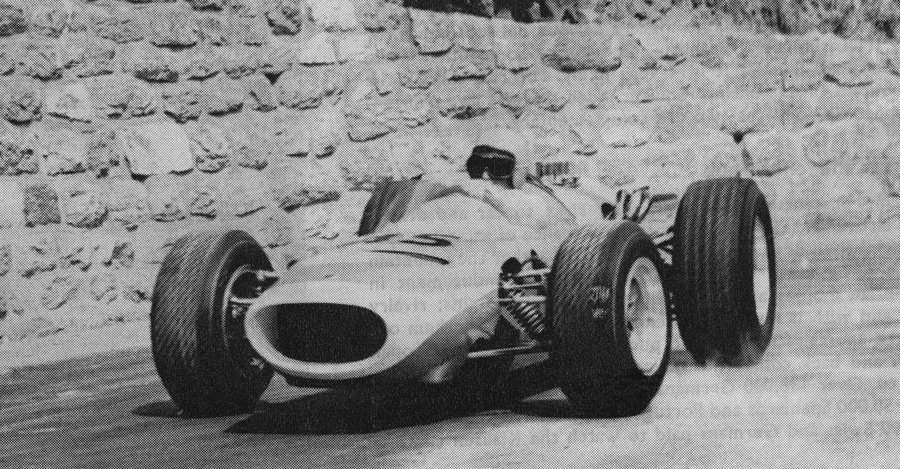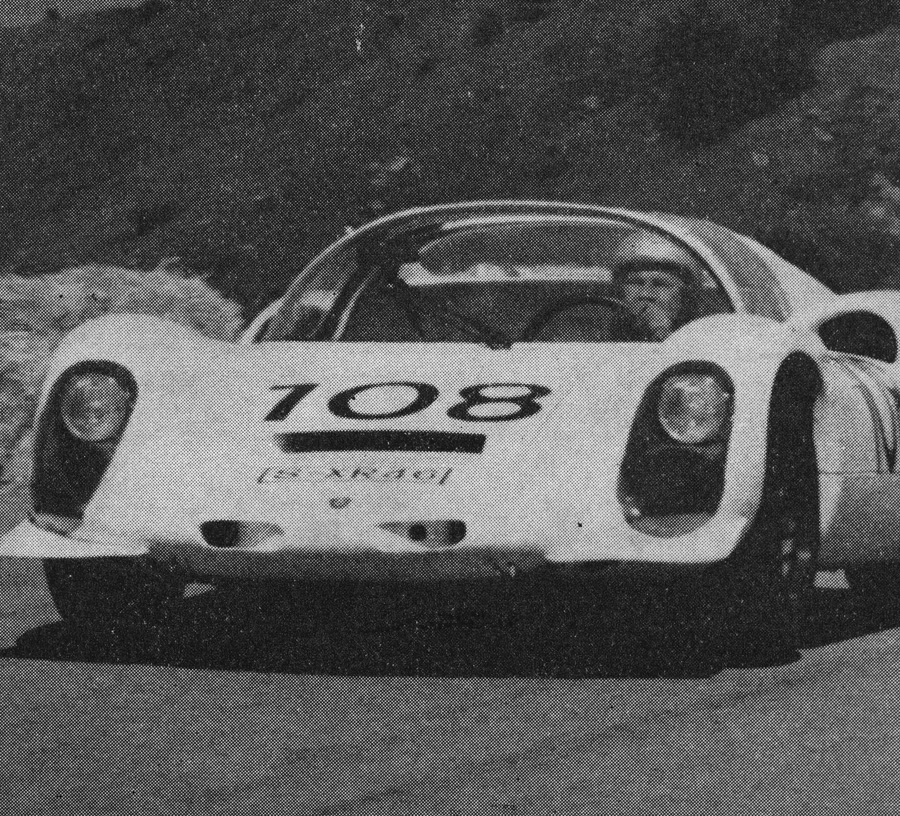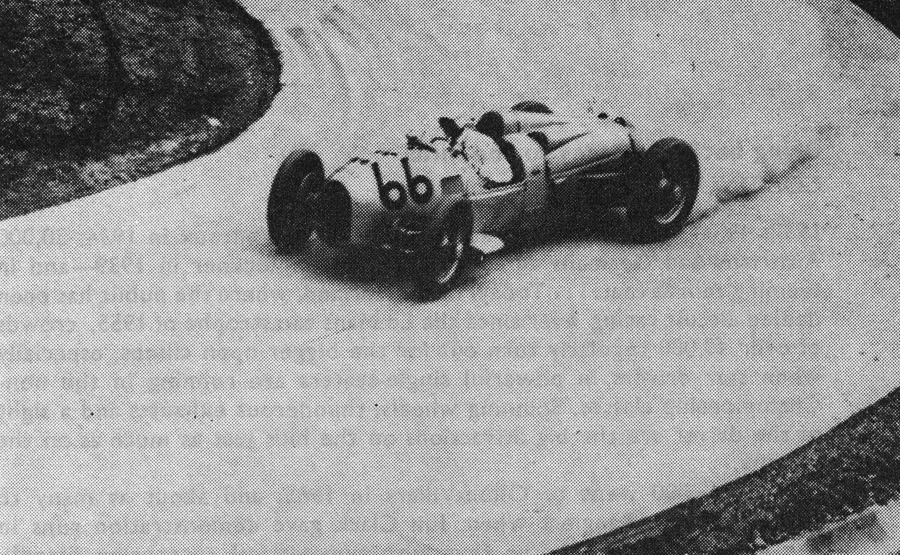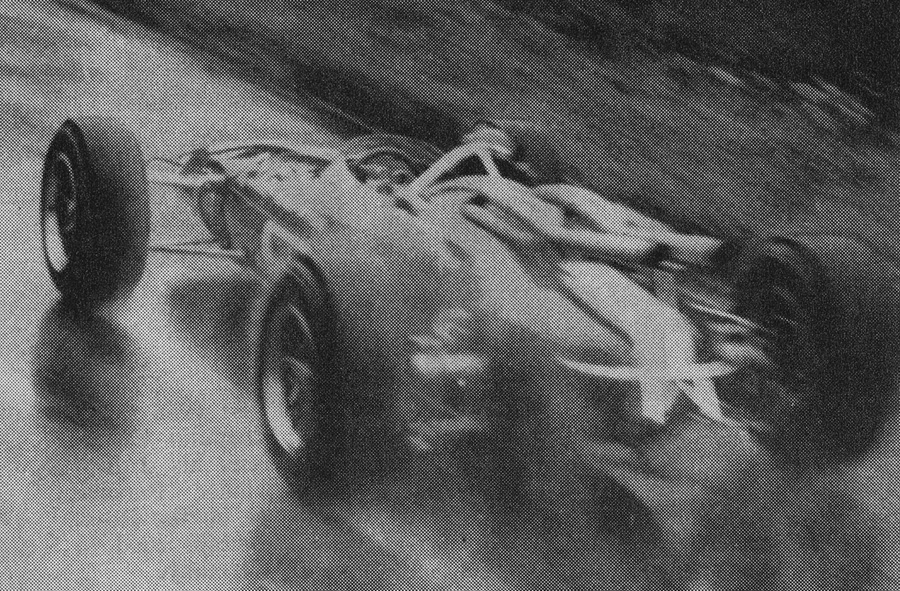Bring back the litres to the hills
In 1957 the contest was revived, but for up to 2 litre sports cars only, and during the last ten years the Mountain Championship has rarely' produced more than mediocre interest, and mediocre crowds. Seven wins fell to Porsche, two to Ferrari and one to Maserati, with precious little other than the honour of the title 'Mountain Champion' going to any of them. Starting money is hard to get, with irritating qualification loopholes, and prize money pitifully small in comparison with the average
International motor race.
In a desultory sort of way the CSI have tried various means of stimulating interest in the Championship. In 1959 they made it 'International' instead of European, and included America's famous Pike's Peak climbbut nobody went-it cost too much. In 1960 they paid £90 to the winner of each qualifying round, and £900 to the eventual Champion. In 1961 they allowed two climbs per country instead of one, and in 1965 they tried admitting GT cars of unlimited capacity, all to no avail. It remained mediocre.
At the end of 1965 Huschke von Hanstein of Porsche suggested that the prototype weight limit be waived for the Mountain contest, but Dragoni of Ferrari insisted that it be retained, and the CSI concurred. After the 1966 contest, won by Gerhard Mitter in a 2 litre eight-cylinder Porsche, von Hanstein took the bull by the horns and suggested Formule Libre for the Championship-a very sporting action by one whose cars suited the Championship rulings very well as they stood. But the CSI could have none of it, and have stuck to their 2-litre sports-racing car fIormula for 1967, although without the weight limit this time.
This should at least give privately owned cars like Lotus 23s with 2 litre engines a chance again, but will it bring brisker competition to the mountains in 1967? Will BMW join Porsche, and Abarth join Ferrari in the struggle? Will Matra or Alpine make a serious bid for France, or Lotus, Felday, McLaren, Lola, Brabham, Cooper, or some other make compete on behalf of Britain? It isn't very likely. For real success the European Mountain Championship requires much more of two things money and spectacle.
The risks and the challenge
Mountain racing presents its own particular risks to car and driver. Spin off on a circuit and you have a reasonable chance of escaping; spin off on a Swiss, Austrian or Italian Alpine road and it's either the mountain -hard!-or a steep drop. But give drivers sufficient inducement in starting and prize monies and they will go to the mountains; rivalry will intensify and with it interest and excitement. Then take them out of their 2 litre sports-racing cars and put them into big-engined open single-seaters, and back comes the spectacle-and the (paying) public, as they used to. Over 138,000 Germans watched the Freiberg hillclimb in 1937; over 50,000 Spaniards and Portuguese went to Rabassada,Spain, in 1931; 60,000 Swiss and Germans paid to watch the Klausen climb of
Bring back the litres to the hills
1932; 46,000 French and Italians went to Mont Ventoux in 1934; 30,000 Austrians and Germans climbed to the Grossglockner in 1939-and in teeming rain at that. . . . Today, In Switzerland, where the public has been denied circuit racing ever since the Le Mans catastrophe of 1955, crowds of over 40,000 regularly turn out for the bigger open climbs, especially when star drivers in powerful single-seaters are running in the non Championship classes. Spinning wheels, thunderous exhausts and a sight of the driver are the big attraction~ on the hills just as much as on the circuits.
Over 45,000 went to Ollon-Villars in 1965, and about as many to St Ursanne-Les Rangiers when Jim Clark gave demonstration runs in the Indianapolis-type Lotus (but with symmetrical suspension fitted !), and other big draws in recent years have included Jack Brabham in 1.5 litre 'GP and 2.7 Tasman cars, Joakim Bonnier in the eight-cylinder GP Porsche and four-wheel drive Ferguson (he broke the absolute record at Ollon-Villars with both in, respectively, 1962 and 1963), Peter Westbury with Ferguson and BRM, both four-wheel driven, Ma,urice Trintignant in a BRM (he won Mont Ventoux in 1964 with it), Swiss drivers Jo Siffert with Rob Walker's Brabham and 3 litre Cooper-Maserati (he won St Ursanne in 1966 with it), Charlie Vogele (2.7 Brabham),
Dr Harry Zweifel and his big 5 litre Oldsmobile V8-engined single seater McLaren, and Georges Gachnang (Cegga-Maserati), and Britain's own Miss Patsy Burt, who has consistently supported Continental climbs since 1960, with F2 Cooper-Climax, RSK Porsche, 2 litre Cooper-Climax and currently 4.5 litre McLaren-Oldsmobile single seater Formule libre rulings would broaden the ChampiQnship in other ways. I
This year it is extending to Spain, for the first time since 1931, and it need not stop there; the Lancashire AC's Tholt-y-Will climb in the Isle of Man could fit well into the European Mountain pattern, even if at 3.6 miles it would be one of the shortest of the series. And British hillclimb exponents with single-seater specials developed for our RAC Championship could compete abroad, as could owners of unemployed Group 7 'big-banger' sports-racing cars, such as Lola 70s or McLarens now outlawed from British circuits. Indeed, one well-known British hillclimb specialist, Philip Scragg, is already having one such Lola converted to open-wheel bodywork by the Felday Company for use on British hills, and others may follow.
Continental mountain climbs such as Mont Ventoux in France, Trento Bondone and Cesana-Sestriere in Italy, Ollons-Villars and Sierre-Montana Crans in Switzerland, Gaisberg in Austria, and Rossfeld and FreibergSchiluinsland in Gerniany,all set in awe-inspiring scenery. The problems they pose are not those"of a' c'ircuit, but of a long, twisting climbing stretch of road, and of knowing its every corner, gradient and bump so intimately that the most experienced Bergmeisters can describe a 6 or 7 mile course yard by yard. Shortage of entries is no problem for such fine events-just shortage of quality entries. In this hard commercial world, only more money can wholly solve that, but the FIA could make a big contribution by reframing the rules.
Author: ArchitectPage






